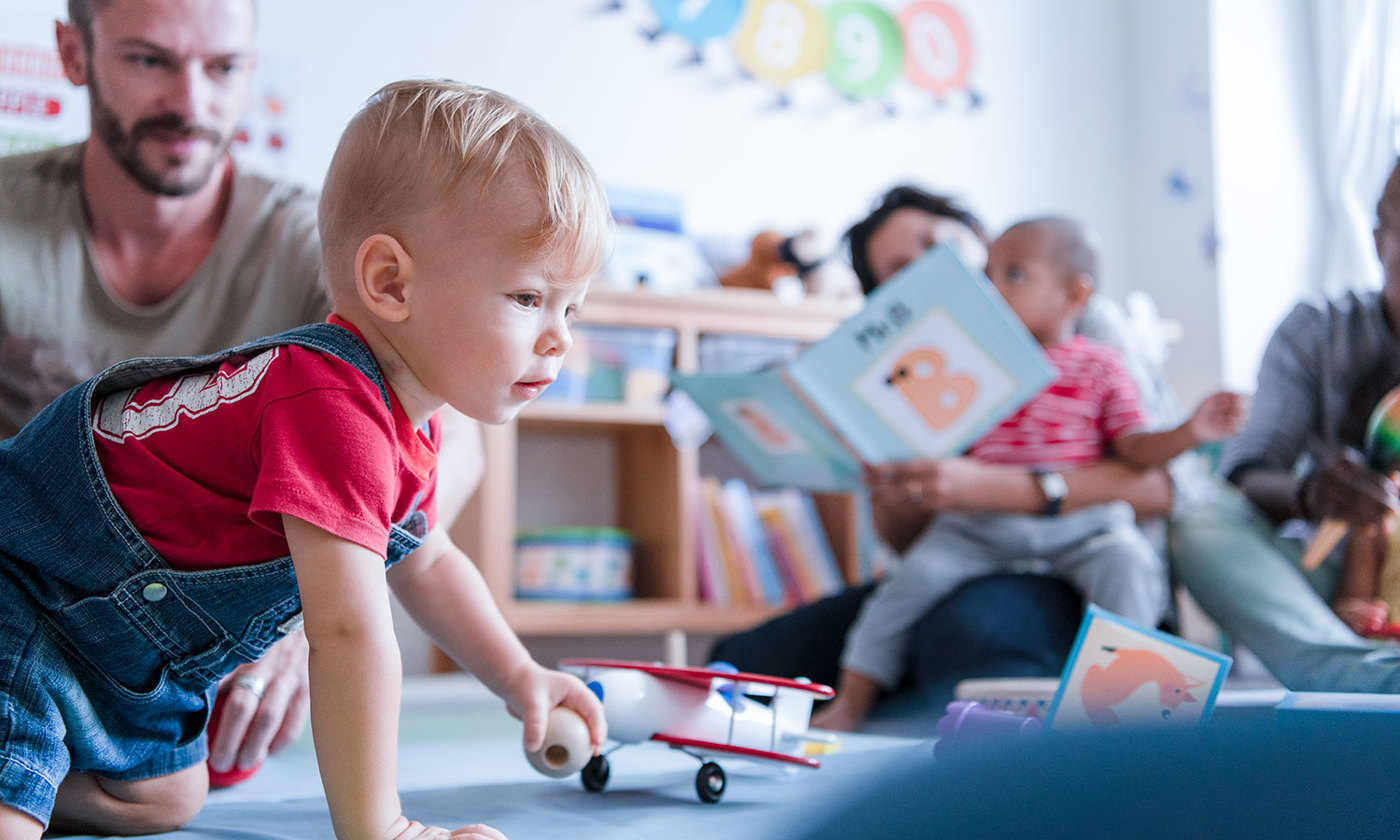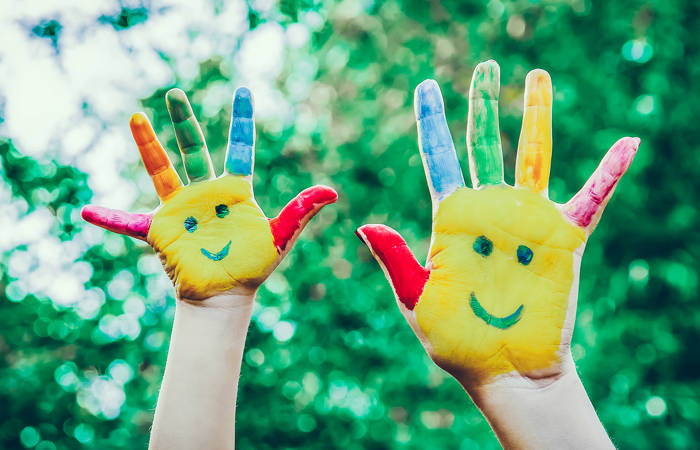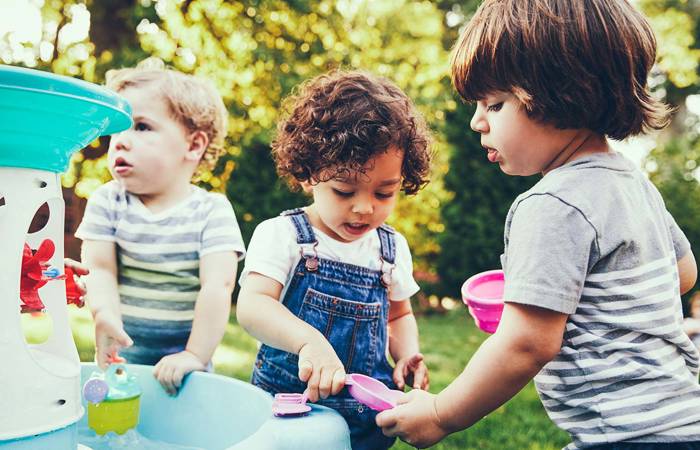Like what you see?
Sign up to receive more free parenting advice.
Thank you for subscribing to our newsletter!
Child Development

Credit: iStock.com/Rawpixel
Children develop their social and emotional skills in stages. Knowing about those stages can help us understand and support our child as they learn to make friends, deal with conflict and develop empathy.
David Loyst is family therapist and autism specialist who has been studying and teaching about parenting for more than 30 years. He says that three key stages of a child’s social and emotional development are incredibly useful for parents to understand.
The three stages called – emergence, adaptation and integration – were named by attachment therapist Dr Gordon Neufeld.
While the first, emergence, arises early, it’s probably the stage we know least about and it occurs in the first one to two years in most children’s lives.
At this early stage, children are pretty good at going with the flow and paying attention.
“Imagine a baby is cruising at eight months of age and pulls themselves up on a table. If they reach for a coffee cup and we say, ‘No, don't touch that,’ they usually won’t touch it,” David Loyst says.
When your child starts saying 'no' and 'mine'
However, it is around the age of two that emergence becomes more challenging for parents he says.
“Developmentally ‘emergence’ starts to manifest in different ways. While earlier we saw it as a ‘cute exploration’ now they start saying ‘no’ and ‘mine’,” David says.
While most parents put the change down to the terrible twos, David says otherwise.
“We think [two-year-olds] are being noncompliant, but it actually is their way of becoming independent,” he says.
Our children need to know that if they don’t perform, they will still get our love. They won’t get our derision or our disappointment. They are perfect just the way they are.David Loyst
Stay up to date with the latest news and articles from First Five Years
Thank you for subscribing to our newsletter!
As children begin to develop their sense of self, parents start to expect more from their child’s social skills. We start to get concerned about how they are acting in public, and when they are with their peers we expect they should start developing social skills like sharing.
“We misunderstand the capacity of two-year-olds to share. They don't neurologically have that capacity yet: they haven’t developed it,” David says.
There’s an additional problem in trying to force two-year-olds to become good sharers. Doing so actually holds them back from moving to the next stage of social and emotional growth: adaptation.
“It is the process of not getting what you want that leads to adaptation. Adaptation is simply learning to bounce back after you don't get stuff that you want. So, you need to have children frustrated, and it needs to be messy, not in order to teach them a lesson, but for them to experience losing control of their cortex,” says David.
The reason this second stage, emergence stage, can look dramatic (think temper tantrums and yelling) is because of what is happening in the area of the child’s brain known as the cortex.
“The cortex taps directly into a child’s limbic system – that’s the mammalian part of our brain that goes directly into our emotional system. In our cortex we only have three options: fight, flight or freeze. You’ll see this in two-year-olds; some children will be aggressive (a fight response), some will hide (a freeze response) and others will say, ‘I'm out of here’ (a flight response),” explains David.
Learning to self-regulate
Adults who help ensure children get practise at working through experiences in the limbic system are starting to build the child’s ability to self-regulate. While the experience of a child’s tantrum or other limbic response can be confronting, a parent’s job isn’t to stop it from happening, but to help the distressed child to label their feelings.
“We can come alongside our child and say something like, ‘You're really disappointed. You're really sad that you didn't get to play with the red car. I get that.’ This builds their ability to move back from the limbic system up to the cortex, by doing this process thousands of times,” David says.
“It is all part of developing their emotional system: their brain goes from emotional back to cortex, back to emotional, back to cortex and over time it becomes adaptive. It’s really important right up until preschool age,” David says.
The third stage of children’s social and emotional development is known as integration. When our emotional system is integrated, we can deal with problems or multiple simultaneous emotions, like: ‘She took my ball and that makes me cranky, but she’s my friend and adults are watching’. This usually happens between five and seven years old in neurotypical children. For those with development delays, the process will come later.
“For children with developmental delays, especially kids with autism, their social and emotional brain is not as tall as their body brain,” David says.
“This means that if you have a four-year-old with autism or severe developmental delays that are not global developmental delays you will see their fine motor and gross motor skills are at, or near age level, but they will have other skills below that level,” he says.
Helping our children reach adaptation
For children to become adaptative, David says the process happens most easily when parents are willing to take that journey themselves.
“We need to become adaptive too. That means we become the “big person” that supports them through their growth. They can lean on us, knowing we’ve got this, and that we will love them unconditionally, now and forever,” he says.
As we do so, David encourages parents to stay aware of when we may be expecting too much of our child’s brain for the stage it is at, and avoid “flipping our own lids” by moving into our own ‘mammalian’ response when behaviours are frustrating.
“Our children need to know that if they don’t perform, they will still get our love. They won’t get our derision or our disappointment. They are perfect just the way they are,” he says.







